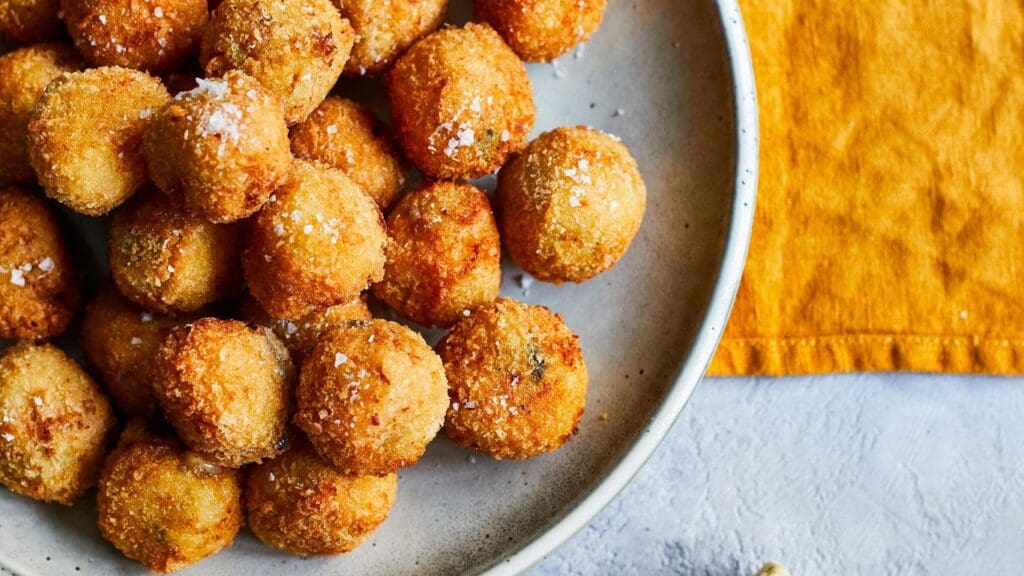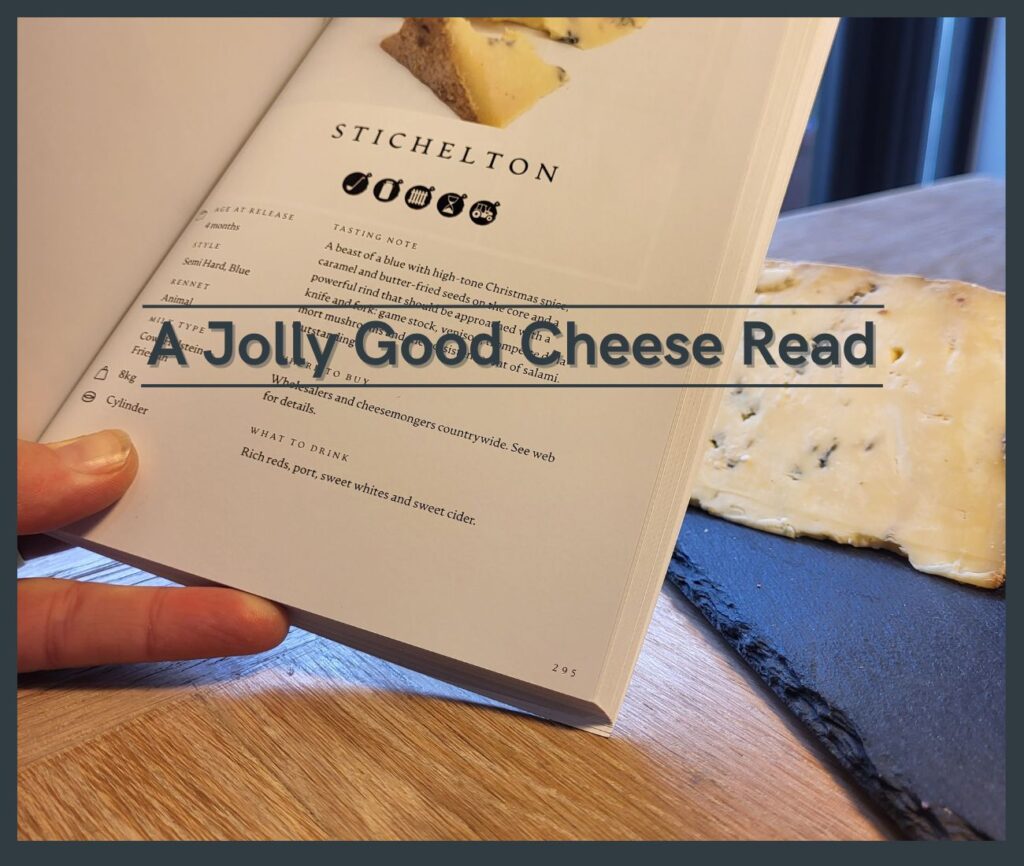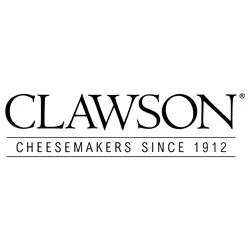In Conversation with Academy of Cheese – Charlie Turnbull talks to Tim Jones about Lincolnshire Poacher, not making cheddar and going green with cheesemaking. Cheese to be tasted are Lincolnshire Poacher, Smoked Poacher and Red Poacher.
Streamed live on Apr 13, 2021
GUIDE TO TASTING CHEESE
Learn about the four stages of tasting cheese and how to take tasting notes with this definitive guide to tasting cheese.
Lincolnshire Poacher, Smoked Poacher and Red Poacher Video Transcript
Okay, hi everybody my name is Charlie Turnbull, this is the Academy of Cheese talking cheese in conversation with Tim Jones. One of and i’m not a regular bit of a legend in the industry sort of forefront of the british renaissance of cheese making, you’ve been making cheese for 28 years, 29 years this year.
I lose track 29 years 1992 we started, yeah so, i need a little new new it’d be boys new boys so 1992 i mean that really was um in that first wave of cheese makers you are the brick pop of cheese basically uh i don’t know about that but we we certainly feel we were lucky the timing was really good because we were one of no there were obviously people doing it before us but we were one of the earlier of this sort of new breed of cheese makers of which there are now thankfully many more and you know hopefully in the coming years we’ll get even more so yeah yeah you can be modest about it but you were doing what no one else was doing and was thought to be slightly nuts um and most people in your position were being driven to it because they didn’t have the quota or they were going bust or something like that well we were here we were nuts partly because we were in the east of the country and nobody makes cheese in the east really and i think it happened because my brother simon came back from agricultural college joined a very successful dairy arable farm and there was wasn’t much room to do so my father just said look boy get out and go and go and do something different interesting so he he went and researched making cheese and and started in a tiny way and it’s and the thing is things have changed a lot in the in the interim so so with 1992 simon kicks off when do you get involved so i we as the old story but we as kids simon was always the farmer signing out with dad rough and double all doing that and i was the dull one at home and went off and got an economics degree went and worked in london as a marketing exec whatever and then dad phoned me up and i had no plans to come back to lincolnshire really because the thought horrified me but then i was just getting into my mid late 20s um i had a longish-term girlfriend and we he said come back and help sell this cheese you know we’ve got something quite exciting and it felt like a bit of a punt but looked quite exciting as well and i i bit his and my brother’s hand off and and moved back so that was in 2000 so 21 years ago more on the marketing side although i do go in i go in the dairy and help every day and i make the butter twice three times a week um but it’s quite it’s good having interestingly having a farm and having a non-farmer so you’ve got the farm we i think if we both winston farming we both fight like hell about cows and tractors but we don’t fight about other stuff but not those things so i think council directors our skills me we’re different personalities and our skills are different so and the business has room for a farmer and a you know a spreadsheet guy and we sort of meet in the middle and we both help in the dairy as well so it is oddly symbiotic well amazing so so let’s let’s delve into the cheese um uh it’s a great name let’s be honest lincolnshire poacher sort of nails it says where you come from instantly recognizable everyone could call it the poacher so so that was very clever was that your marketing skills coming in or you know i’d love to sit here and say yes it was it was my old man so i was still at university when they started making the cheese came back um one weekend for a weekend or whatever and they would they’d made this cheese they didn’t know what to call it and then dad just had this light bulb moment because they were going what lincoln should cheddar know that’s wrong and loads of names and he just looked at your poacher that’s it was it was a proper lightbulb moment and it’s because of the old there’s a lincolnshire poacher’s song that i won’t sing because you’d run a mile from me but no that’s going i want to hear it come on what’s the song come on it’s dancing it but it was twas my delight on a shiny night in the season of the year and actually every county had the song for their own county same words but their county but lincoln show it sort of carried it on so locally people know of the english poetry song and there were a couple of pubs called each poacher so it seemed appropriate and we said we post the name which is appropriate i suppose as well um and yeah no the name is really good and it travels what’s funny about the name is it it feels you know if someone doesn’t know where linkedin is if you’re in america or france wherever it feels very grounded it feels like it’s from somewhere it feels like it is but sometimes names can get lost and i think linkage approach feels quite agricultural and grounded and i and it’s and it reflects where we’re from you know we’re proud yellow bellies we’re proud to be linkages so um why not why not shout about it yeah and let’s be honest we always like the idea of the you know to be a poacher we want to be out with the gun and the dog in the in the dusk aft after a couple of the landlords pheasants you know uh anyway so so anyway so you’re back then or rather your dad and your brother are and they decide well they’re going to choose cheese at that point or or simon does what what what happens to bring what is basically a cheddar root into lincolnshire so simon was he liked hard cheese so just as a human being he light heart cheese and so that he was just drawn to that naturally which i think is a really good idea um and he visited various cheddar makers and then he went to visit a guy called dougal campbell who was making an alpine style cheddar in west wales and dougal had learned his cheese making in in the swiss and french alps and so i think he brought that that their little tendencies to his cheese and so when simon simon dougal got on really well when simon made cheese with him and so literally on the very first day dougal drove over from west wales he had a little schweppes tonic bottle with some renitin he had a sachet of starter and he um he they made cheese together simon had the milk and the kits and that was that was it was that was it so yeah he was winging it like so many people do when you start you are you know you’re trying to learn about your milk and your situation and you don’t you know you don’t know you know how that’s gonna pan out and you it’s a journey and it’s still a journey for us you know we’ve changed the cheese masses over the years and and we’re still you know we’re still and that’s part of the joy of you know it sounds so cliche but it’s part of the joy of making cheese is you never know it all it’s a and and things that keep keep changing it’s it’s a you’re making a vintage every day the milk changes every day the protein changes every day so you you’re learning all the time you’ve got to be willing to learn all the time i think i always say that the wine guys have it easy they do one bottling a year and and hang their hat on it and say isn’t that clever a new cheese boys are making a bottling or bottling every day you know and every single time it changes with the weather with the season where one of you know with a butterfly banks it’s wings in brazil and you’ve got to make a new cheese so uh so so so i want to delve into it before we start eating the cheese which i’m really keen to do because you do you’re on record as saying this is it’s got it’s alpine influences that it’s it’s it’s if i can paraphrase cheddar with alpine influences is sort of where you’re at what are alpine influences what are they in the make what are they in the taste what do you mean by that well i i saw it ultimately from a consumer’s point of view if you’re eating it it’s you get without punches they tend to be that slightly drier slightly smoother texture you get nuts you tend to get the nutty sweet notes i mean kante would be perfect example is very sweet uber uber sweet and and you get lots of those nutty flavors often with it and so i think you you know you don’t always get it with our cheese but you definitely get you certainly get it with the texture that smoother texture and i think you often get those nutty fruity you know floral fruity notes um with it you don’t you know whereas the cheddars tend to be more brothy and beefy and meaty and i mean a lot of other things but um yeah that’s that’s it in in a simple way but um and how do you get them what are you doing when you’re in your dairy to get those to happen so um we use very little starter culture so all cheese makers acidify the milk obviously when they’re making the cheese and when we started we followed exactly to dougal’s recipe and he was using quite a lot of starter and what the start the starter drives the acidification of the of the milk so you you’re you’re doing a rapid acidification and we over the years have slowed that acidification down so we use less we add less because there’s natural bacteria in the milk doing that anyway so you’re a big raw milk fan i mean that’s that’s very important to what you do yeah well as key i think for us it’s key where you literally this morning at six o’clock in the morning the cows were milked that warm milk gets pumped fresh into the vat and it’s still it’s still alive it’s still awake and when you taste fresh sweet raw milk straight from the cow it tastes slightly sweet it’s like it’s like some liquid ice cream and and you know the analogy i always give is if you go and pick a carrot from the garden and you put it in the pot and you eat it it tastes different very different from what you would get in the supermarket because it’s still alive it’s still you know everything’s still there um and and raw milk is exactly the same so we’re we’re very keen so we always use at least half the milk i mean we just use a day’s milking so this afternoon’s milk gets cooled down and then that is added to tomorrow morning’s milk which goes in fresh and warm it’s absolutely key for us so so i’m gonna i’m gonna i’m gonna paraphrase a bit so what you’re basically doing is in as doing as little interruption to the natural acidification of the milk as possible you’re boosting a bit with starter we get it going we wake it up and then we’re allowing the milk to speak and i think the cheese we make now compared to the cheese we made um 20 years ago is i think we get less of a starter flavor with our cheese and i think we get more of the milk flavor and i think particularly with our better cheeses i mean our so the each day’s make as you’re alluding to each day’s make is different so the the speed of acidification will be different each day and on those on the days where it’s a really nice slow acidification slow me we tend to get those really 3d three those long luscious rich dancing flavors that we’re looking for whereas our quicker cheeses tend to have a bit more bite bit more edge but the flavor will die off more quickly and we prefer those more those longer flavors that have a bit more depth and complexity that’s what we’re really looking for so that you can still taste it minutes down the line all right okay time for cheese um we’ve got some questions are you supposed to eat the rind from allison um let’s get to them let’s let’s go are we supposed to eat the cheese first so i have been lucky enough you sent me three different ages your poacher your vintage and your double barrelled um now i i remember when i came to visit you you don’t even grade your cheeses you just sort of lock them up and let them go is that right yeah in a way i mean most cheddar makers would taste at 3 6 9 12 months and tinker with the recipe through the year we prefer to trust the make and if the makes right the cheese tends to be right and it you know it’s just it’s just what we’ve always done so we taste the cheese first of all i mean at the moment we’re tasting cheese at 15 16 months so we you know we don’t we don’t alter the make we alter the make according to what’s happening with the milk not according to what’s happening with the flavor of the cheese so vintage is what is what age well the vintage um at the moment is is close to 24 months poacher is sort of is 18 to 21 i mean this but this one is actually 22 months um and the double barrel this particular batch is three years old now i’m going to come on to that because i remember you telling me some story which amused me but so basically we’ve got pre-covered cheese pc that’s exciting no one can even remember that now um but let’s um let’s let’s tuck in yeah cool so you’ve got one of the most my my camera is making my cheese disappear which is it’s not my stomach but this is one of the most distinctive rinds in all of cheese make in the uk there you go how about that that’s yeah it gets i mean the rhine does vary a bit week by week month by month but you tend to get this leopard skin sort of effect yeah distinctive orange and brown mottling yeah so we don’t we don’t add we don’t use cloth bandages and lard you know the cheddar makers um are constrained by the history and tradition of making cheddar and they use lard and cloth bandages to protect the cheese and we because we’re making a modern equivalent we use a um a dutch product that they use in in holland um called plasticoat which has got a terrible name but it does a brilliant job and it’s you paint it on the outside so it’s not edible um but it allows the cheese to breathe and dry out so we lose about 10 of the weight of the cheese in the store so it’s still maturing as it should do but it gives it protects it really well so we don’t tend to get it so i’m going to interrupt you that tim james lambie’s been eating your grind gaily i’m only assuming that um he’s not in trouble um it’s just it’s edible but not digestible let’s put it that way yeah i mean we don’t recommend eating it i know i know of people who do eat it but we certainly do we don’t recommend it um but good on you james okay so it’s got this kind of um breaky uppy edge which you can see there um which is very distinctive and the coloring which is very exciting and the other thing i always think you can tell your you call your older cheese double barrel you’ve got more of a barrel shape around the edge right yeah so this particular one is from a smaller cheese so we make we make a few every most days we’ll make a few eight kilo cheeses but most of our cheeses are 20 kilos so that’s but also what tends to happen with with these double barrels when we’re selecting we’re selecting cheeses with a slightly softer body so that they tend to blow a bit they tend to bow a bit um whereas our our normal standard cheeses tend to be a bit more up and down i mean they do they do all bow a little bit but you always you your cheese is always bow compared to cheddars cheddars are much more outstanding bandages keep it in in line whereas ours they’re allowed to go where they where they want to go so if you don’t drive they tend to be the ones where we don’t we’re not able to drive the moisture out in the make so they tend to be a bit a bit wetter and a bit more bowed which one are you eating there still on your poacher so i’m going in for a smell so you do have a a dry a dry sweet note um trying to sort of you said bandages sort of makes me think of bandages it’s almost like plaster cast if that makes sense or a newly drying pasta yeah or it’s a slightly musty note on the rind isn’t it as well you’re gonna go woody i’m going maybe slightly yeasty yeah i’ll go with the yeasty more than woody um it’s got a warm flavor it’s it’s almost it’s got a beery smell is what it is yeah maybe yeah yeah yeah that sort of beery smell um a warm beer and it and it it breaks sort of like cheddar that’s what you’d expect sort of cheddar to do roughly speaking yeah we tend to get these fishes these cracks in the in the cheese so that’s pretty usual to see those when you buy our cheese and if you’re going in to see um i don’t know a chef or a anybody who who knows what they’re talking about from a taste perspective but doesn’t know your cheese what is it that you you say your taste to cheese taste off i i we call it alpine we the it tends to be nutty but you see we can get we get the savory sweat flavor so sometimes you’ll get those brothy beefy beefy meaty um umami notes but you also can get i mean the very best cheese we make tends to have a bit of both so they tend to have that sweetness but also that meaty savory flavor and that tends to drive the flavor along what we don’t what you don’t tend to get with our cheese is that sort of edge that that slightly bitter acid edge and we do we get acidity in the cheese obviously but we do and we occasionally get slightly over acid cheese where it is a bit bitey and a bit bit zingy but we tend not to get those flavors we tend to get the more the more rounded longer we’re looking for length and depth of flavor so our very best cheeses have that that lovely long dancing flavor that stays with you changes through its life but it’s with you a long time because i’m tasting this and um i sort of feel there are two phases of it when i haven’t chewed it very much and i’ve not got much saliva in my mouth i feel it tastes more cheddary and then as you chew it and you get more moisture in your mouth it becomes much more creamy and those sweet nuttier flavors coming out so it’s almost like it’s expressing its two the two sides of its personality in the time it’s in your mouth but it’s well i mean you know every batch varies and i haven’t tried this back before now i haven’t have time before today but you know i’m trying it for the first time now today and what i like about it is a nice slow build so it comes it’s you know it’s a you you have to wait patiently and it’s coming and it’s coming it’s coming and it’s you know it’s not it’s not the biggest flavor it could you know if i was being critical of that i could say i could have a bit more to it but it’s it you know it’s a real eating cheese cheese to go back to i have i have a what i call my right hand rule what does your hand do when you’re not paying attention when you’re drinking drinking or talking whatever but i’m finding it’s just dipping back in here on a regular basis so am i eating the same batch as you do you know if i am or i’m not really that was made on the 26th of june 2019. so we’re talking 22 give or take i’m i’ve got the 6th of july oh pardon me i thought i’d pick the same batches well that’s a mistake of mine oh well i’m not in the same place i must be picking up the wrong one there sorry that’s the best before but i mean 26th of june 2015 there we go so it’s but it’s made in 2019 so yeah you need to look at the batch code okay batch goes 2606 25. but that was made so that was made in 2019 two years ago so well that’s an interesting people for people watching that you can tell when it was made off the back of a linger packet is that always there for people to see so the day in the month will be so it’ll be roughly two years old or just under or just over and the day and the month will tell you where when in the year it was made so that was summer cheese so and actually it’s got some summer notes to it hasn’t it it does have some summer notes i’d agree with that super surprised that’s the middle of summer um summer cheese okay that’s quite exciting all right where are you taking us next time so let’s go vintage next okay so this was made it’s only fractionally older see what with our the age of the cheese it’s people go you know poachers younger and more gentle supposedly and vintage is older and stronger but it’s not always that it’s about the poacher actually tends to have a bit more cut through that particular batch doesn’t have as much cut through necessarily but it tends to be a bit more cut through the vintage tends to have a bit more depth of flavor and it’s the ones we particularly like so this was made 28th of may 2019 so 23 months old it’s completely different yeah a month apart it’s got a different texture but it hasn’t got any of those kind of um and i mean this is a nice way it hasn’t got so many of those um savory agricultural notes at least not in the first half of the flavor they did come up in the second lecture this is what farmyard what’s interesting there what’s coming from me now is a little bit of a a little bit of a not a bite but it’s got i’ve got top of the pallet and top and my tongue i’ve got a little bit of sort of what i would call hot that slightly that well that’s just how that’s how i would describe that that’s what which is very different from the other one and if anything yeah very different it’s got it’s got almost like a a tomato note like a green tomato note um very different i mean for me that’s not actually that i got more alpine notes in this is sort of slightly counterintuitive but i got slightly more alpha notes in the first one i get less alpine in the second one in the video i got i got more out on the more notes full stop in the poetry this one has kind of a narrower more difficult i mean that’s so normally that would be the other way around that there you go it’s the door of making cheese the yeah the other one is more imbalanced this one’s actually got that little edge through it but it’s but you know that’s a cheese that people will really like because it’s got that that little kick that little sort of edge running so it’s it’s definitely a style of cheese that we can that we that people like that that appeals to people but in terms of in terms of length i mean i don’t want to be rude about anybody’s cheeses there but i’m thinking that first one had double the length of the second absolutely double the length yes and do you know i’m gonna be totally honest with you if i was doing that blind i would say the first one was vintage and the second one was poacher but you know what’s interesting is when you taste so we’ll taste 20 batches in a row and you get you get you calibrated on what you’re tasting at that time and so inevitably that moves up and down depending on on what you’re tasting um and you know that’s i i totally agree with you the other this the first one is a better example of our cheese than the second one the poacher is a better example there’s comments saying that lancaster poacher and tomatoes are passionate lovers they they do they do go together so you know yes yes absolutely right so now we’ve we’ve got the the double barrel yes which is your um so this is a three-year cheese just under three years it’s been made in a smaller cheese and we’re gonna have a go at it so is anybody else making three-year cheese in the uk to your knowledge um there will be but i don’t know um gosh and that’s really interesting immediately savoury and again very different you know three totally different cheeses it’s got it’s much more alpine in character um it’s got a distinct fruity note in fact i’m staying on the tomato theme it’s almost like got a ketchup note kind of um yeah nice work nice work lovely texture the way it breaks in the mouth i really like that um and you would expect this cheese because of its three-year nature to have the biggest boldest flavor it does not no no no it’s still pretty refined yeah i mean what tends to happen is if you if you get that cut through archie’s needs selling young because that it can start to take to to take over so we tend to sell those edged cheeses younger and the and the better the cheese generally that you know a little bit like good red wine the better the cheese the longer it’ll keep you know that’s certainly true in our case um that’s really interesting i think that that’s i’m going to leave it at the vintage for this comparison it seems to be a bit of an outlier from even your perspective yeah it is i’m surprised but what i’m tasting here is the clear you know that your early one your poacher is of the cheddar school if i can put it that way whereas or got one and a half feet and cheddar and a half a foot in alpine whereas your double barrel is one and a half feet in alpine and a half a foot in cheddar yeah and that’s you know it’s part of the joy of what we do is it’s it’s not an exact science the milk is living breathing it’s moving all the time and this you know the skill of the cheese maker is to judge the curd on that day and and and get the numbers right the you know but i mean so uh today the cows went out went out the first time dancing in the fields whatever so they’ve been in all winter and the milk in a couple of days or three days will start to suddenly change so we’ll get much more activity we’ll need less star to culture because we’ve got more live bacteria in the milk and to make you know john and and simon or whoever’s in there will have to you know adjust the make to to to accommodate or or guide it in a different way it’s a really tricky time particularly when the cows go in actually it’s even harder when they go out we tend to get our lovely output particularly alpine we get a really nice run of alpine cheeses from now for the next month or six weeks so our mid late april and the whole of may as long as it’s not a wet may tend to be our our best cheese is what we would consider our best cheeses so so that’s that’s interesting so it to this degree your cheese’s seasonality you pick out this period as being the the the the purple patch of your year yeah i mean i don’t that’s again it’s inexact and you could you can taste the cheese in the middle of winter and go gosh that tastes very summery but if you were to try and guarantee a really good run of consistent cheeses with lots of depth of flavour etc you’d probably go for this from you know the last two weeks in april first two weeks in may keeping your cheese for three years is expensive um and i remember hearing from your own mouth so it had better be true that you lost a palette of cheese in your store one time and found it uh found it some time later well yes sort of so we had well we had this it’s happened a couple of times where we’ve i don’t know whether we’ve lost the cheese but we’ve had cheeses that were not right at a certain age and and thought probably we were going to end up having to to can and then you come back to it much later like three years and i i don’t know what it is about our recipe or our milk but it’s very forgiving and there’s always a point on the spectrum that you go and it might not be a stellar cheese but there’s always a point at which it it it finds its feet it’s like a you know sometimes they’re like difficult adolescence and they they just blossom late or you know something happens and those those are just early on that you thought were going to be there forever disappear and it gives and you have a window of of actually it’s it’s it’s good cheese so we’re fortunate um that that happens okay i i i’m not sure i’ve got past my difficult adolescence yet um but i’m still looking forward to it now i’ve got a question here from uh savoring bath now obviously i’m choosing this question because i know the answer how often do you turn them when they’re maturing tell us about flow what a great question so for the last 28 years we have turned our cheese by hand weekly for the first month and then monthly thereafter 20 kilos so we have about 14 000 cheeses on the farm so turning them physically over um once a month so richard cheese turning chap turns 18 000 shoes a month but a year ago almost to the day we bought a cheese turning robot from switzerland and we have named her florence florence the machine and she is amazing and she now goes up and down our aisles and she literally will pick the cheeses up she finds them with her little laser picks them up and flips them over and puts them back on the shelf beautifully gently even though it’s 20 kilos so it’s revolutionary rish is a happy happy man that now he operates a machine rather than doing it himself so um you know it’s been a really exciting journey and if you have a look on instagram i’m going to put a video i haven’t done it yet i will put a video on instagram of florence in the next um week or so of her turning out she’s and there it is it’s a sight to behold she’s she’s amazing i think we should under the academy we’d love that for training purposes as well to show people what a machine does so i’ve suddenly realized saving both i know you mike i had forgotten your your pseudonym so thank you for the question mike on that question um so the first machine in the uk was tina turner uh and you’ve come in with florence and machine so i think that this raises the opportunity of um a twitter name your machine storm which i rather fancy um a rock and roll names for all uk cheese turning machines i think that would be fantastic um uh tim we’re coming to the end i want to just throw stuff out you’ve got one minute to talk about your sustainability and your on the whole thing because you’re big in there aren’t you yeah we are we’ve done over the last 10 or 12 years we’ve done loads on the farm you know we’re lucky we’re on a we’re on a 800 acre site um and so 10 years ago we put up a 275 kilowatt wind turbine so that’s it’s a sort of farm scale machine so it’s 30 meters to the hub with um 50 foot blades on top so it’s a it’s 150 feet so i’m changing from feet to meters 150 foot tall in total and that generates more electricity than we use in a year so we’re net exports of electricity 50 kilowatts of solar panels up we put two biomass boilers in um we’re going to start with our latest project we’re going to start planting some hazel so we can harvest that and put that through the through the pellet boil at the wood boiler um we’ve got a ground source heat pump for the office and for our packing room so we do we’re trying to do what we can to mitigate you know the the the the carbon that we use so it’s been exciting those have all been really exciting projects sorry if i missed that but have you reached net zero or have you not reached that zero well i’m a massive fan of net zero because we you know we do stuff we know we’re using how can you say net zero when you’re using fuel for your tractors it’s you know yeah yeah but we’re gonna we’re you know we’ll go to electric vans we’ll eventually go to electric tractors so which we’re working on trying to do as much as we can you know we just want to be as have as little impact as we can on the on the the environment that we’re that we’re using you know we’re just custodians for the for the next few years and then someone else will take it on and the next generation next generation we’ve got seven children between us so uh well hopefully we can find find one between one or two they’re still finding their feet you know they’re still um teenagers so um we’ve got plenty of time right well um uh tim we could talk all day there’s a lot of stuff we didn’t get on to we didn’t talk about your link shared we didn’t talk about your smoked no no well we didn’t even really talk about your cows bluntly so can i invite you back i don’t know sometime later in the year or whatever and we’ll we’ll hear more about your awesome cheese making journey and the family and all that yeah definitely definitely i can’t believe that’s been half an hour it’s gone really quickly it’s gone really quickly it’s great thank you very much thank you everybody who’s watching for all your comments i see there’s been quite lively chat there and for us at the academy cheese from tim up in lincolnshire and from all cheese lovers everywhere good night to you all thank you guys





















